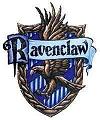June is here, and early summer has finally come to our rambling Hobbit-Hole in the Sandias.
The scrub oak turned from brown to green while I was in Chicago, and the flowers are blooming in the meadow.Our plans for this summer's homeschooling are project based, just as last year's were.
N. is taking the first weeks of June as a break--which means doing archery and Kamana, and reading on the porch during the long, summer evenings. Taekwondo and Boy Scouts continue.
In late June, N. will be attending BSA camp with his troop, where he will be working on Riflery, Scuba, Advanced Horsemanship, and First Aid merit badges to add to his collection. Merit Badges have specific, rigorous requirements and when a boy has earned one, he has learned both content and skills related to the particular badge.
 At the beginning of July, N. will hop on a plane for a two-week visit with his cousins in Bloomington. This is a pleasure trip, but my sister has several day trips planned that will be educational as well as recreational. One is to visit the Lincoln Museum in Springfield, as well as Lincoln's New Salem. The other is to visit the Illinois-Michigan Canal National Trail, where the boys will learn all about how canals were built, operated for commerce, and how locks work.
At the beginning of July, N. will hop on a plane for a two-week visit with his cousins in Bloomington. This is a pleasure trip, but my sister has several day trips planned that will be educational as well as recreational. One is to visit the Lincoln Museum in Springfield, as well as Lincoln's New Salem. The other is to visit the Illinois-Michigan Canal National Trail, where the boys will learn all about how canals were built, operated for commerce, and how locks work. During the last two weeks of July, N. will get on another plane and fly from Illinois to New Jersey. In Jersey, he will spend Shabbat with our former cantor, and then go to two Children of the Earth Foundation Camp sessions: The Way of the Woods and the Way of the Gatherer. There he will be learning content and skills related to tracking and being at home in the wilderness.
N's summer learning plans are quite uncoventional. The education is not at all academic. However, I am continually amazed at how much he learns from travel and from camp. These experiences seem to cause quantum leaps in his maturity. He is taking greater and greater responsibility for who he is becoming, intellectually, physically and spiritually, from these less conventional learning opportunities.
I am glad we can continue to widen his horizons through these travel adventures.
And at the same time, I will miss him. Every summer when I send him off, I know I am saying good-bye to another piece of the little boy I knew forever. Every August, when he returns, he has incorporated another part of the man he is becoming.
The pictures above are all from the meadow behind our home. I am amazed at how summer snuck in while I was gone!















































